Exploring Taman Ayun Temple
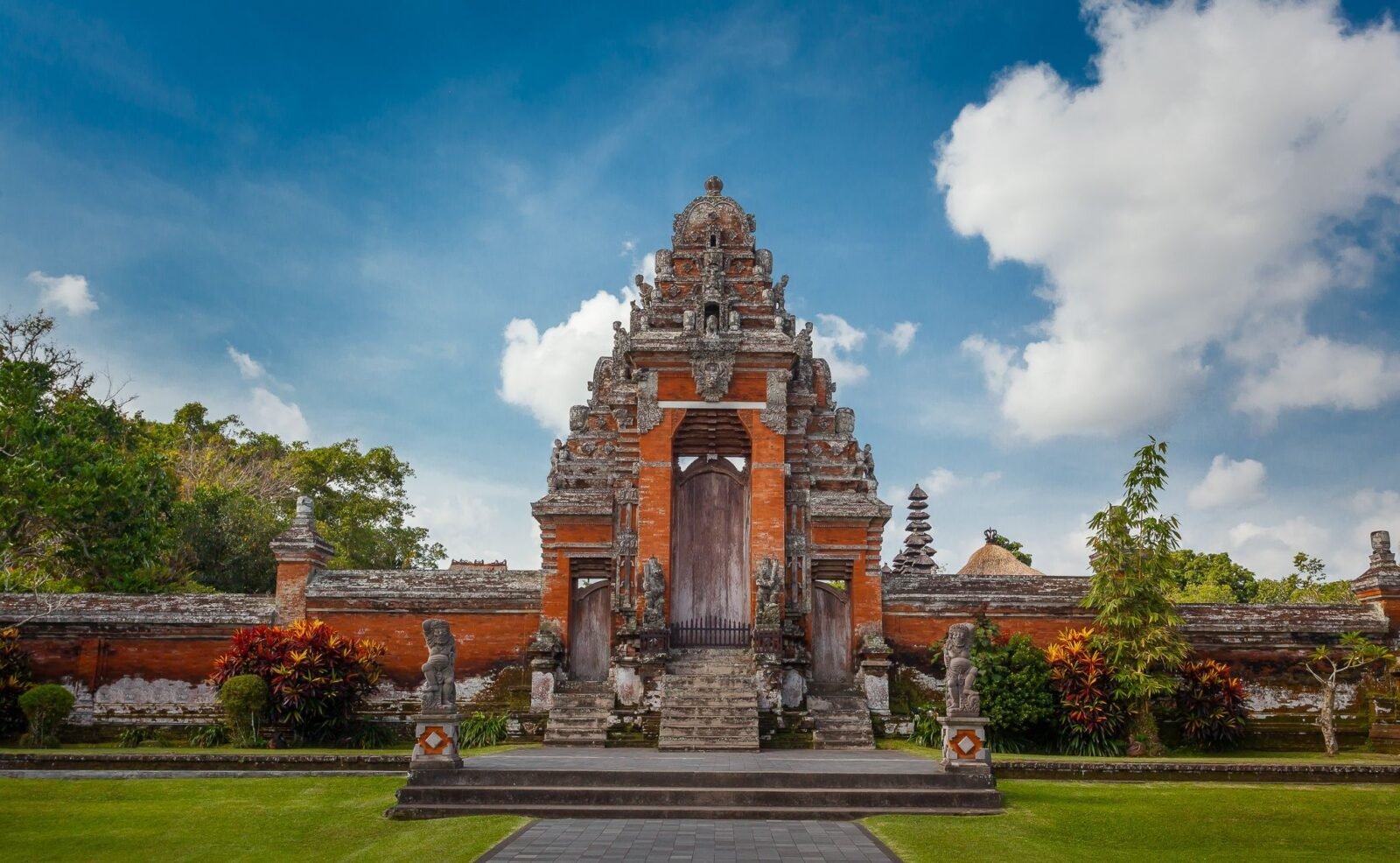
Taman Ayun Temple. Nestled in the tranquil village of Mengwi, just 18 kilometers from Denpasar, Taman Ayun Temple is one of Bali’s most exquisite heritage sites. Known for its stunning architecture, lush gardens, and sacred atmosphere, this temple complex is a cultural and spiritual treasure. “Taman Ayun” translates to “beautiful garden,” and true to its name, the temple is surrounded by a sprawling landscape of manicured lawns and serene waterways, creating a harmonious blend of natural beauty and human craftsmanship.
This article explores the historical significance, architectural splendor, and cultural importance of Taman Ayun Temple, offering insights into why it remains a must-visit destination in Bali.
1. Location of Taman Ayun Temple
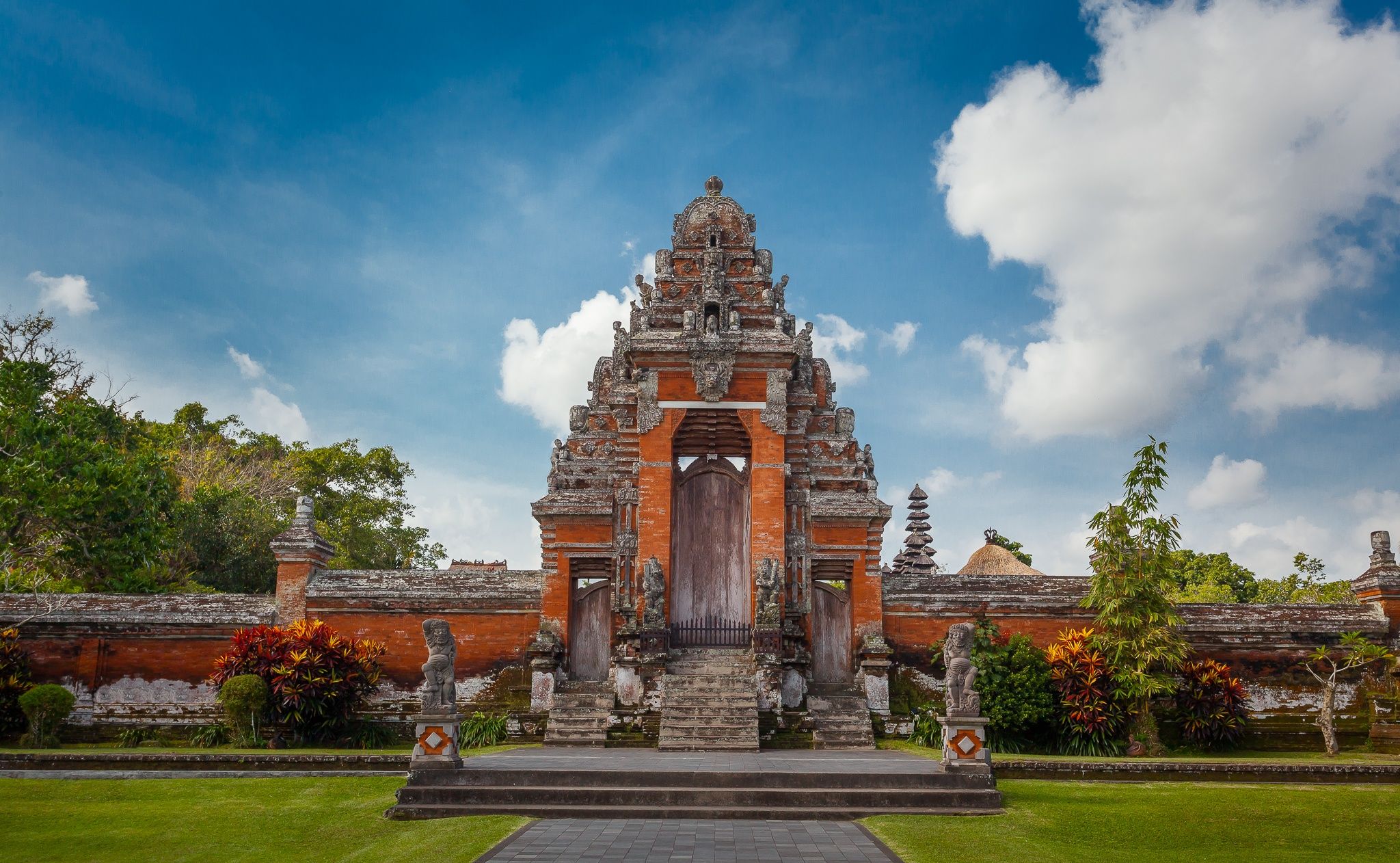
Taman Ayun Temple is located in Mengwi District, Badung Regency, about a 30-minute drive from Bali’s bustling capital of Denpasar. Its strategic position makes it easily accessible for tourists exploring southern Bali. The temple’s location amidst rice fields and small villages offers a serene escape from urban areas, allowing visitors to experience the essence of traditional Balinese culture and spirituality.
2. History of Taman Ayun Temple
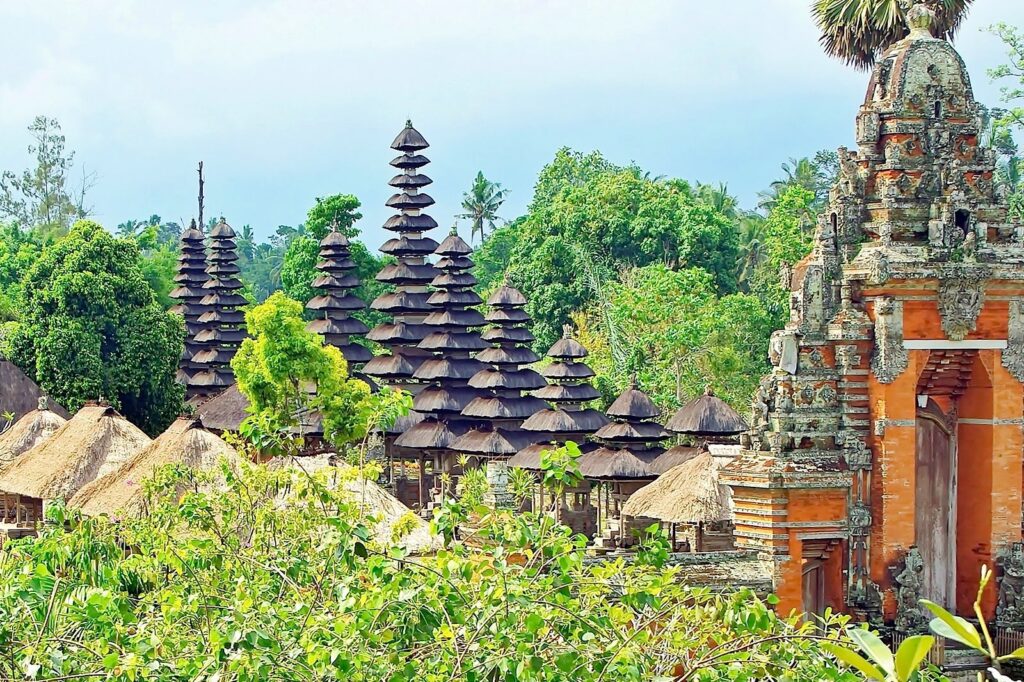
Taman Ayun Temple was built in 1634 by King I Gusti Agung Putu, the ruler of the Mengwi kingdom. This site served as the royal family’s temple and a place to worship ancestral deities. The design reflects the king’s ambition to create a temple that symbolized harmony between humans, nature, and the gods, a concept deeply rooted in Balinese Hinduism.
The temple underwent several renovations, with significant restoration efforts taking place in 1937 and 1949. Today, it stands as a UNESCO-recognized site, celebrating its historical and cultural importance in Bali’s religious landscape.
3. Architectural Highlights of Taman Ayun Temple
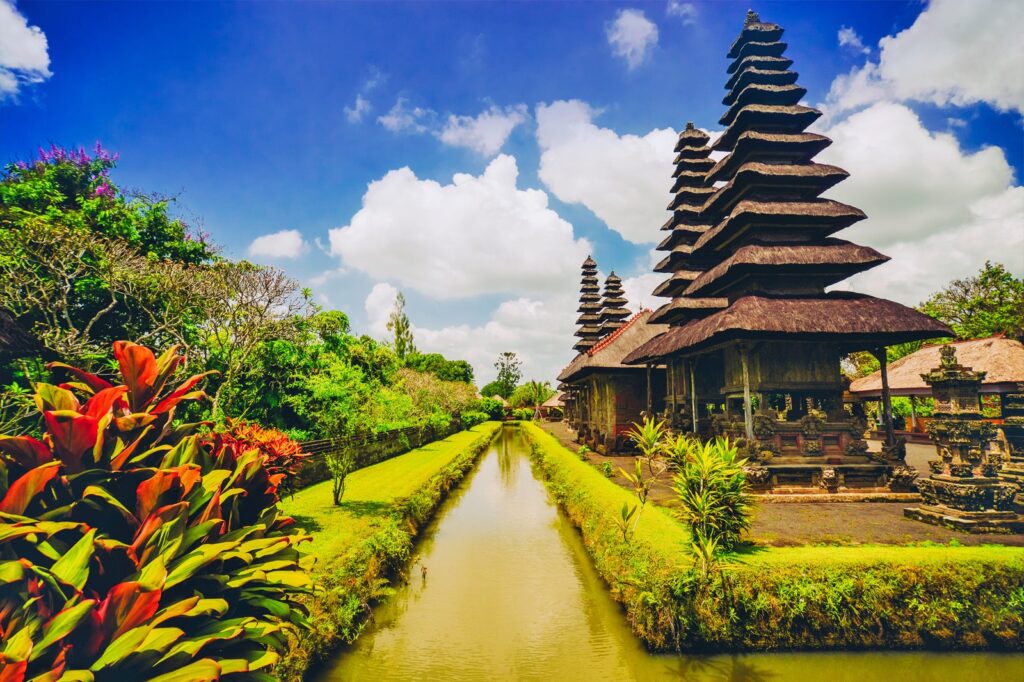
Taman Ayun Temple is a masterpiece of traditional Balinese architecture. Its layout is divided into three main sections, each with distinct spiritual and cultural significance:
a. Outer Courtyard (Jaba Pisan)
The outer courtyard is the first area visitors encounter upon entering the temple complex. This space features a wide pathway, manicured gardens, and a spacious area often used for welcoming ceremonies. The entrance gate, adorned with intricate carvings, is a striking introduction to the temple’s artistic grandeur.
b. Middle Courtyard (Jaba Tengah)
The middle courtyard serves as a transition between the mundane and the sacred. This area contains several pavilions (bale) that were traditionally used for royal gatherings and religious offerings. One of the highlights here is the large pond filled with lotus flowers, symbolizing purity and enlightenment.
c. Inner Courtyard (Jeroan)
The inner courtyard is the holiest area of Taman Ayun Temple. Accessible only during special ceremonies, it houses Meru shrines—multi-tiered structures that symbolize Mount Meru, the sacred mountain in Hindu mythology. The shrines are dedicated to various deities and ancestral spirits, reflecting the temple’s spiritual essence.
4. Taman Ayun’s Water Garden
One of Taman Ayun Temple’s most enchanting features is its water garden. The temple is surrounded by a moat, which gives it the appearance of floating on water. This design symbolizes the cosmic ocean in Hindu cosmology, reinforcing the temple’s spiritual connection to the divine.
The water garden is not only an aesthetic feature but also a vital element in Balinese irrigation systems, known as Subak, which are recognized as a UNESCO World Heritage Site.
5. Cultural and Religious Significance

Taman Ayun Temple plays a central role in Balinese Hinduism, serving as a site for annual ceremonies and festivals. The temple honors ancestral spirits and seeks blessings for prosperity and harmony. It is part of Bali’s Kahyangan Jagat (universal temples), making it spiritually significant for all Balinese Hindus.
The Odalan Festival, held every 210 days according to the Balinese Pawukon calendar, is the temple’s most important ceremony. During this time, the temple is adorned with colorful decorations, and devotees gather to offer prayers and celebrate with traditional music and dance.
6. Things to Do at Taman Ayun Temple
Visitors to Taman Ayun Temple can enjoy a variety of activities that showcase Bali’s rich cultural heritage:
- Explore the Gardens: The lush gardens surrounding the temple are perfect for a leisurely stroll and photography.
- Admire the Architecture: Take time to appreciate the intricate carvings, shrines, and traditional Balinese gates.
- Learn About Balinese Culture: Guided tours provide insights into the temple’s history and its role in Balinese Hinduism.
- Witness Ceremonies: If you visit during a festival, you can witness traditional rituals, including offerings, music, and dance performances.
7. Tips for Visiting Taman Ayun Temple
- Dress Modestly: As with all sacred sites in Bali, visitors are required to wear sarongs and sashes, which can be rented at the temple.
- Best Time to Visit: Morning hours are ideal for a peaceful experience, while late afternoons offer beautiful lighting for photography.
- Respect Local Customs: Avoid stepping on sacred areas and always follow the instructions of temple staff.
- Bring a Guide: Hiring a local guide enhances your visit by providing in-depth knowledge about the temple’s history and cultural significance.
8. Facilities at Taman Ayun Temple
Taman Ayun Temple is equipped with facilities to ensure a comfortable visit:
- Parking Area: Ample parking space for cars and motorbikes.
- Restrooms: Clean and well-maintained restrooms are available.
- Souvenir Shops: Visitors can purchase traditional Balinese crafts and souvenirs near the temple.
- Nearby Restaurants: Several local eateries offer delicious Balinese cuisine, making it easy to enjoy a meal after exploring the temple.
9. Why Visit Taman Ayun Temple?
Taman Ayun Temple is more than just a historical site; it is a living embodiment of Balinese spirituality and artistry. Its serene atmosphere, stunning architecture, and cultural significance make it a must-visit destination for those seeking to understand Bali’s unique heritage.
Whether you are a history enthusiast, a spiritual seeker, or simply a traveler in search of beauty, Taman Ayun Temple promises an unforgettable experience that captures the essence of Bali’s cultural and spiritual richness.
Visiting Taman Ayun Temple is not just a journey to a sacred place; it’s an immersion into the soul of Bali. With its harmonious blend of nature and human artistry, this temple remains a timeless symbol of the island’s cultural and spiritual legacy.


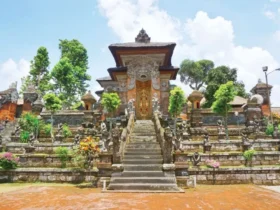







Leave a Review